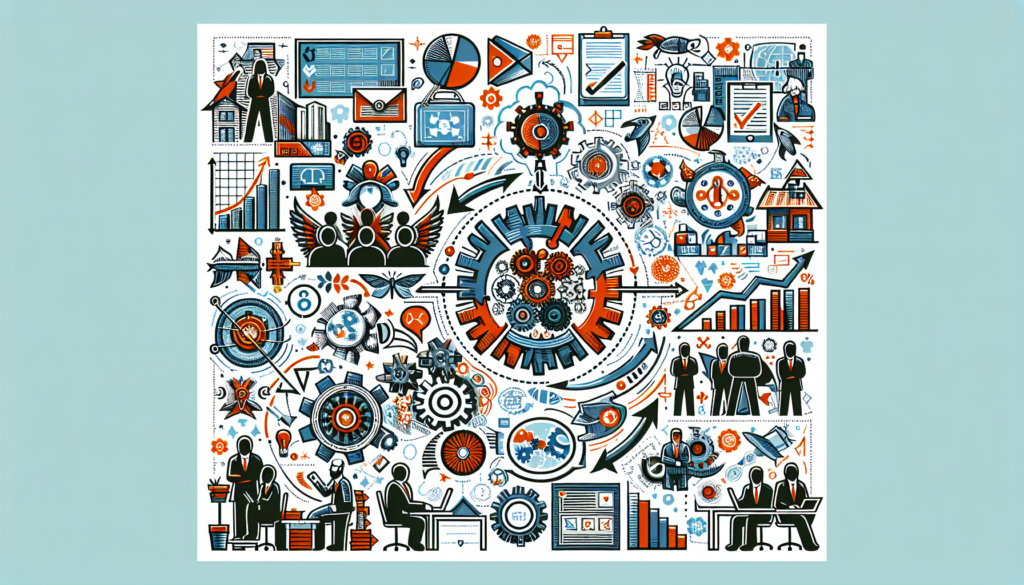The implementation of Agile methodologies in traditionally structured organizations presents a unique set of challenges and opportunities for transformation. This article takes an in-depth look at the complexities and nuances of this process through a deep and technical analysis, with a special focus on advanced theoretical and practical aspects, while not neglecting the historical evolution and future implications of Agile in such organizational environments.
Fundamental Theory of Agile
Agile is a term used to describe a set of principles and practices that promote flexibility, collaboration, and value enhancement in the product development process. Originating in the software sector with the Agile Manifesto, this methodology values individuals and their interactions above processes and tools, functioning software over comprehensive documentation, customer collaboration over contract negotiation, and responding to change over following a plan.
Implementation of Agile in Traditional Organizations
Challenges in Cultural Transformation
The implementation of Agile requires a shift in mindset from leadership to work teams. Traditional organizations often face resistance due to rigid hierarchies and well-established processes that do not encourage adaptability or quick decision-making.
Relevant Case Studies
Studies such as the one carried out at IBM by its own Global Business Services division demonstrate how the integration of Agile practices can result in significant improvements in efficiency and team morale, but not without first facing obstacles in dismantling the preexisting organizational culture and educating all levels of the company in new ways of operating.
Implementation Strategies
To overcome these challenges, implementation strategies focus on the gradual introduction of Agile practices and employee training. The creation of pilot teams that fully adopt Agile methodologies can serve as success stories and benchmarks for the rest of the organization.
Training and Mentorship
Mentorship and ongoing training are essential. Specific training programs and the assignment of Scrum Masters or Agile coaches to advise teams result in a more effective adoption of Agile practices.
Organizational Structure and Processes
In a traditional structure, transitions towards more Agile practices involve a review and adaptation of the preexisting organizational structure and processes. The breakdown of departmental silos and the promotion of cross-functional teams are fundamental steps to promote fluidity in collaborative work.
Impact on Roles and Responsibilities
The Agile adaptation also affects roles and responsibilities, pivoting from a “command and control” approach to one of “facilitation and autonomy.” The leader’s role is transformed to act as a facilitator, promoting team autonomy and self-regulation.
Adoption of Agile Tools and Technologies
The selection and implementation of the right tools are vital to support Agile processes. From project tracking systems like JIRA to communication platforms like Slack, the Agile tool ecosystem must align with the organization’s capacity and needs.
Measuring Success and Return on Investment (ROI)
To assess the effectiveness of Agile implementation, it is necessary to establish clear performance and success metrics. Metrics such as time to market, customer satisfaction, and product quality are key indicators that can justify the investment in transitioning to Agile.
Innovation and Continuous Evolution
Pursuit of Constant Improvement
The Agile philosophy does not stop at initial implementation. Constant inspection and adaptation are key principles. Retrospectives become an essential mechanism to identify areas for improvement and continuously adjust processes and behaviors.
Agile Scaling
For large organizations, scaling Agile requires a structured approach that can address the complexity of multiple teams working synchronously. Methods like SAFe (Scaled Agile Framework) and LeSS (Large-Scale Scrum) provide frameworks that can be adapted to organizational needs to manage large-scale projects while maintaining agility.
Future of Agile in Traditional Environments
The evolution of Agile could see the merging of these practices with AI and automation, to anticipate changes and optimize resource allocation in real-time. The adoption of Agile in non-technological environments, such as the public sector and education, suggests a trend towards operational versatility and efficiency in all areas of management and leadership.
In conclusion, implementing Agile in traditional organizations is as complex as it is enriching. Through careful cultural adaptation, the redefinition of structures, and the introduction of supporting technologies, organizations can not only overcome the inherent challenges of this process but also capitalize on opportunities to innovate and evolve continuously in an increasingly dynamic and demanding market.

